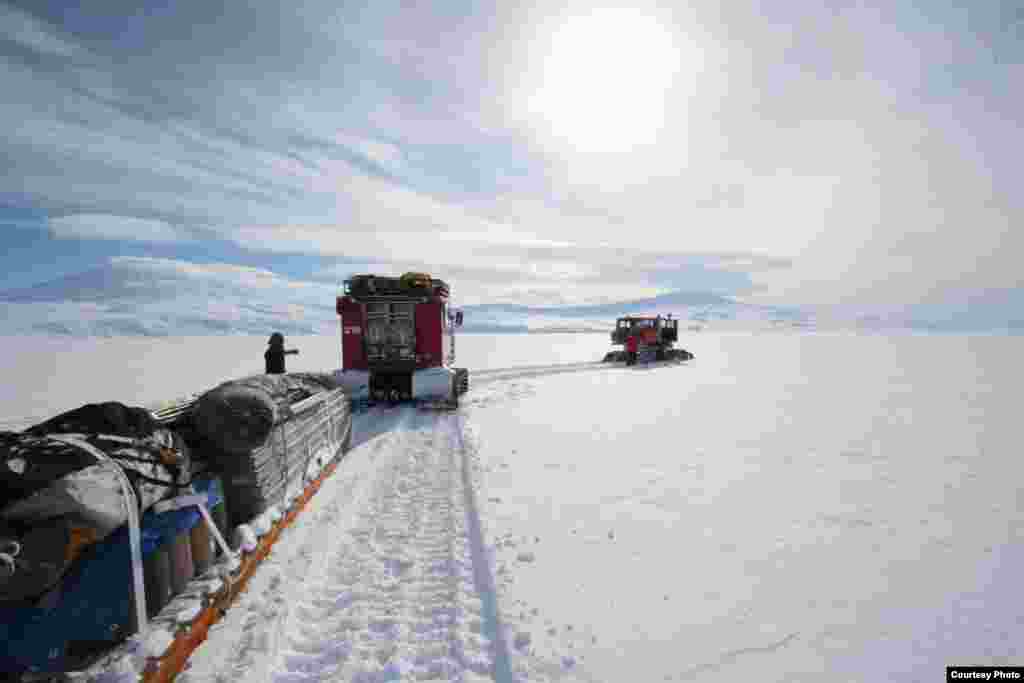Antarctica Fiber Optics

5
A lightweight ice core drill is used to penetrate to within a few meters of the ocean. The coring drill is then replaced with a small thermal melting drill for the last few meters into the ocean. (David Holland)

6
The fiber optic and pressure sensor cables were quickly lowered down the hole to the ocean just before the ocean water in the access borehole froze. Once frozen in place, the cables were connected to the surface instrumentation package of lasers, detectors, data loggers and satellite communication gear. (Victor Zagorodnov)

7
All of the equipment and camp supplies were traversed across the ice shelf from McMurdo Station via sled and snow machine. (Victor Zagorodnov)

8
Last look at the site before winter sets in. The instrumentation package was powered by solar panels during the summer months (seen just in front of the snowcat) and an experimental wind turbine for the dark winter. The surface instruments, including daily satellite data link, consumed less than 8 watts, or about the same as a bathroom night light. (Scott Tyler)



